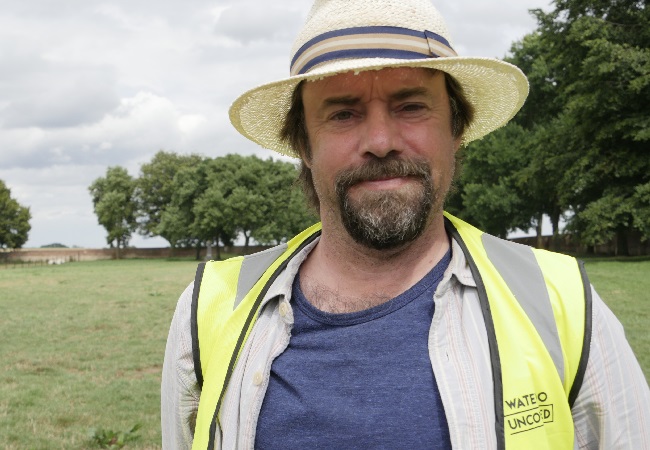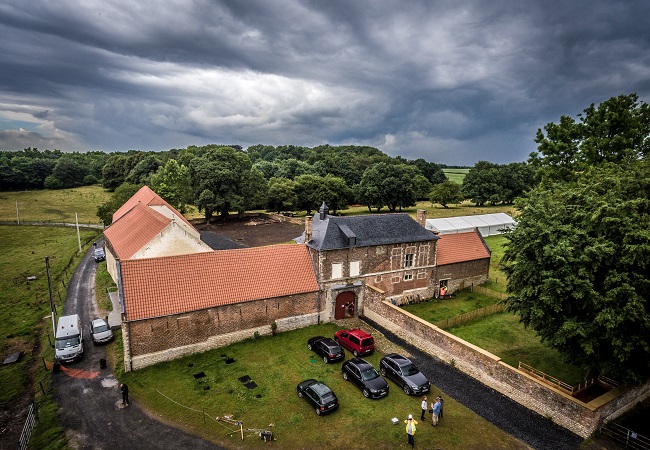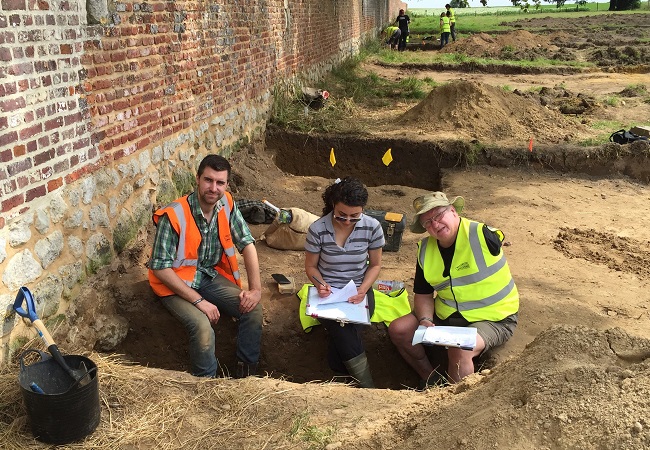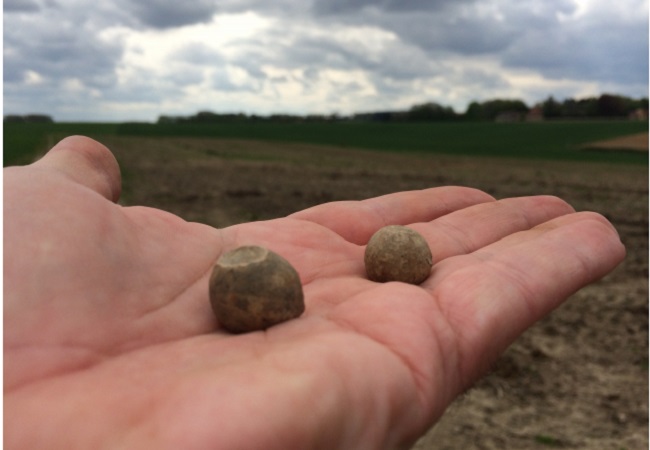Excitement Building for Waterloo Uncovered Dig
Published: 27 June 2018
Professor Tony Pollard, Director of the Centre for Battlefield Archaeology at the University of Glasgow, looks forward to this year’s upcoming excavations with Waterloo Uncovered on the famous battlefield in Belgium.

Background
Hougoumont Chateau, with its walled compound, formal garden and orchard, formed an important advance position in Wellington’s defences at the battle in 1815. From the very start of the battle its German and British defenders, notably the Coldstream Guards, held off repeated assaults by French infantry, which gradually developed into an epic “battle within a battle”, consuming more and more troops as the French tried desperately to break through its defences.
Since 2015 Waterloo Uncovered -the charity that combines world-class archaeology with veteran welfare and recovery- has been excavating at Hougoumont to understand it’s importance in the battle –and why the French failed to take it.
Tiime Capsule
Professor Pollard said: “At the end of last year’s dig by the North Gate of Hougoumont, we started to discover evidence of the original buildings that had been destroyed in the battle and subsequently sealed under a layer of demolition debris –what promises to be a “time capsule” of the battle.

“We know that at one point in the fight, a party of Frenchmen smashed open the wooden doors of the North Gate, breaking through the British defences and penetrating the compound. The closing of the gates behind them by a group of British Guardsman, (commemorated by life-sized statues at the site), is seen by many as a pivotal point in the battle. We may now be seeing evidence of that fight.
“The burnt destruction layer is starting to give up its secrets: we found artefacts from the battle, including a button from the uniform of a Coldstream Guardsman, silver braid from what could be the epaulette of a French officer, and musket balls. Just as importantly, we’re getting a better understanding of the layout of the buildings in the area where the French broke in. Where today we see an open grassy area, during the battle in 1815 would have been an enclosed, chaotic maze of barns and stables, packed with defenders who were able to fire down on the attacking force from walls and windows, shooting them down like “fish in a barrel”, and wiping them out to a man.
Further excavtions
“This year we hope to excavate more of the buildings. We’ve looked at other barns of a similar period in the area; by comparison with the regional style, we think we’ve found the remains of the pillars inside the barn –so it’s possible we might uncover the interior of the building, and there could be allsorts from the battle in there. We’re hoping to find evidence of how the building was used in the battle - was it an Aid post for the wounded? I like to speculate personally, on whether one of my “forbears” from the University of Glasgow was here –we know that at least one surgeon from the University served in the battle!
“Another area we’re going to examine further is the “Killing Zone” and the Garden Wall.

“In attack after attack the French dashed across a narrow strip of open ground between the cover of the wood and the wall, only to be shot down in droves. Analysis of the deposits of musket balls is helping to build up a picture of the intensity of that firefight. Furthermore, we think we might be seeing evidence that the French managed to get over the wall into the garden area in at least one place (the wall you see today is largely a reconstruction). If true, that’s a story that’s not been told before; it’s one of the great “what ifs” of the battle –if the French has got more men over the wall into the garden and overwhelmed the defenders in that area, Hougoumont could well have fallen.
"For me, another great question of the battle is: “why didn’t the French just bring up artillery and blast the wall away?” We know that later in the battle they used shells to set the buildings alight. Well we’re starting to find evidence that the French did bring up at least one cannon; it looks like they used grape shot to try to sweep defenders from the walls in support of the infantry assaults. We’ll be exploring that further this year.
Mystery
“Another unsolved mystery is “what happened to the thousands of dead disposed of after the battle?” We want to test further the theory that many of the bodies were later dug up and shipped to England to be ground–up as bone meal for agricultural fertiliser. Strange to see how attitudes changed: barely 100 years later and only a few miles away, the Imperial War Graves Commission was finding ways to commemorate with dignity individual fallen soldiers in their stone cemeteries.
“For me, the excitement of battlefield archaeology is that it makes you look afresh at stories you think you know. You can read shelf-loads of books by military historians about a battle like Waterloo, but the real buzz of archaeology is that you’re dealing with artefacts that bring the story to life. I come originally from a background of prehistoric archaeology, where you’re used to looking at phases over hundreds, if not thousands of years. By contrast, the ballistic marks on a musket ball, the pattern of shot scatter, the ruins of a collapsed building, they can give you a “microscopic” impression of combat –the actions of a few men, sometimes over a few minutes and hours.

“There’s the extra dimension of working with veterans as part of Waterloo Uncovered. It’s brilliant to share a laugh and see the benefit people in the team are getting –many of them have had a shed-load to deal with, including Post Traumatic Stress Disorder. But for me as an archaeologist there’s more. I remember once visiting the Falklands with a veteran of the fighting there: to walk over Wireless Ridge and hear his perception of the landscape as he advanced into battle was phenomenal. Some of our team on Waterloo Uncovered have had first hand experience of close-quarter fighting in walled compounds in Iraq or Afghanistan –very like the layout of Hougoumont. . You can be kneeling next to them in a trench and they’ll notice something that you haven’t and you’ll think: “Yes, you’re right!” That’s a uniquely valuable perspective for an archaeologist to have.
“I encourage my History and Archaeology students at Glasgow to look at a portfolio of evidence beyond books and archives. One of the things we’ll be doing to try to understand what did-and didn’t -happen here is to use Wargaming as a tool. Next Summer at the University of Glasgow we’ll be making an attempt on the world record for the largest Wargame using 28 mm figures; it’s called The Great Game: Waterloo Replayed. As a preview this summer we’ll be replaying the fight in the very place it happened, feeding in new evidence from the dig as the Wargame progresses –and maybe coming up with possible answers to some of the “what if” questions that this place throws up”.
Waterloo Uncovered
Waterloo Uncovered is a charity created to carry out archaeological work across the Waterloo Battlefield and in the process support veterans and serving military personnel with their recovery, education and transition to civilian life. It is comprised of five partners organisations: The Centre for Battlefield Archaeology at the University of Glasgow, L-P Archaeology, Service Public de Wallonie, Ghent University and University College Roosevelt/University of Utrecht.
First published: 27 June 2018
<< 2018

